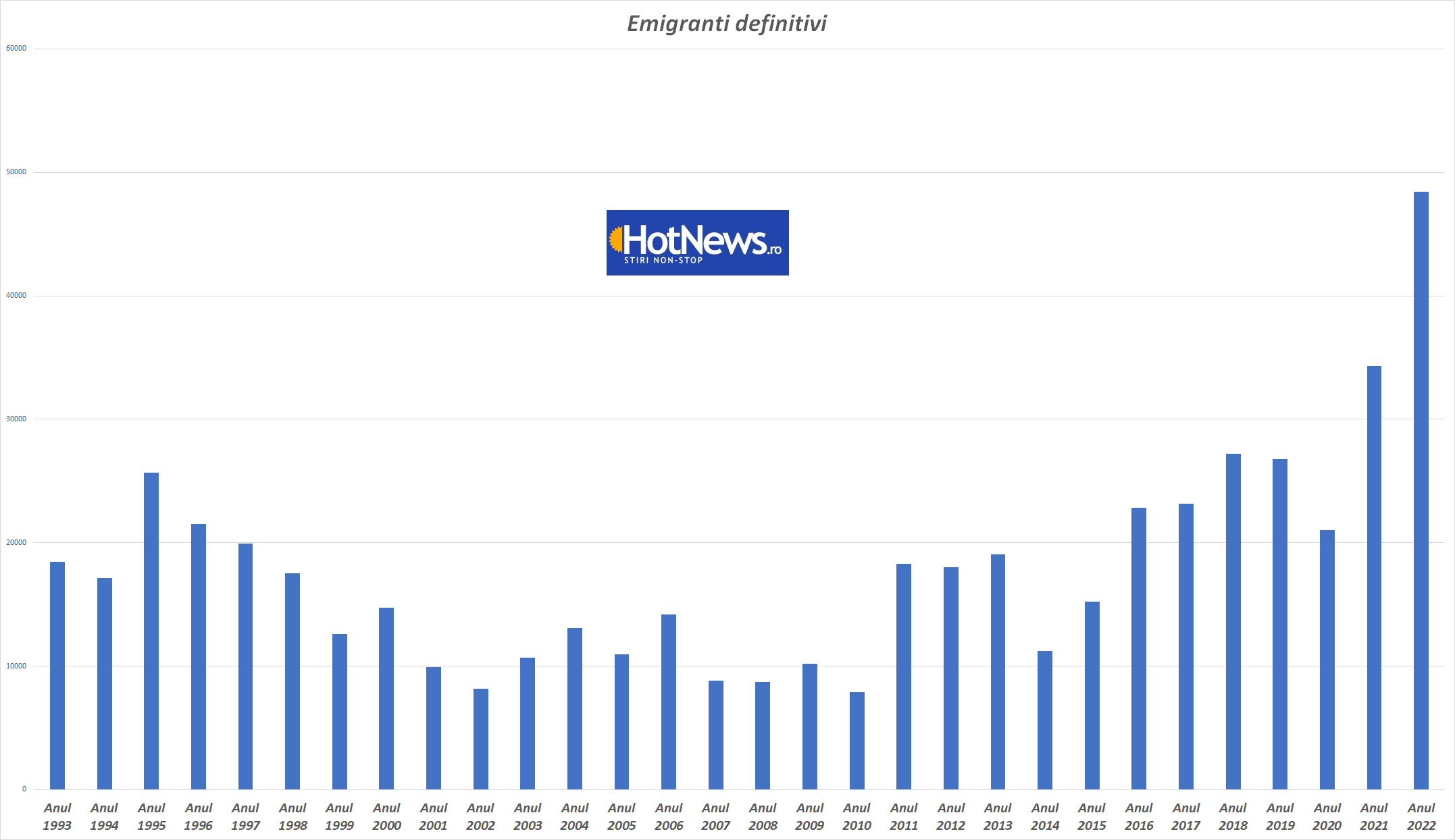
Just over 150,000 babies were born last year, according to data released Monday by the National Institute of Statistics. Such a situation has not happened since 1924. And demographic forecasts for the next 20 years show that from this point of view we are in the midst of a crisis.
With declining birth rates, increased emigration, negative natural growth (last year almost 250,000 Romanians died and 155,000 were born), it is no wonder that we lose a million inhabitants every 10 years.
The decline in deaths reflects an increase in life expectancy at birth, which, although among the lowest in Europe, stands at almost 73 years.
Demographically, the population of Romania would have decreased even more, but the workers brought from abroad became a surprise.
For the first time in Romania’s history, immigrants who come to work are the main reason for Romania’s population growth, the National Institute of Statistics points out.

In the medium projected version of the permanent population, the population will decrease by 2060 by approximately 290,000 people in the urban environment and by another 293,000 people (32.3%) in the rural environment.
The population of the Bucharest-Ilfov region will record the smallest decrease -11.1% (both in the urban environment, -10.6% and in the rural environment, -15.4%) during the period 2017-2060, the rest of the regions have a significant more decrease, between 21.7% (north-eastern region) and 48.8% (south-western Oltenia) in the urban environment, and in rural areas between 21.5% (north-eastern region) and 49.0% (south – western Oltenia) ).
By sex, the male population may decrease in 2060 compared to the present by almost 30% in urban areas and by more than 33% in rural areas, and the female population by 26.6% in urban areas and by 31.2% in rural areas, statistics also show.
The male population is decreasing the most, almost to half of the male population can occur in the regions of South-Western Oltenia (-50.9% in urban areas and 51.4% in rural areas) and South Muntenia (-44.0% in urban areas and -44.6% in rural areas) .

The smallest decrease is projected in the Bucharest-Ilfov region (-10.4% in the urban environment and -15.4% in the rural area), followed by the North-East region (-21.4% in the urban environment and -21.6% in rural areas).
In the case of the projected female population, the situation is similar, the largest decrease may occur in the same regions as in the case of the male population, respectively in the regions of South-Western Oltenia (-46.9% in the urban environment and 46.6% % in the rural area ) and South Muntenia (-42.4% in the urban environment and -42.2% in the rural area), and the lowest in the Bucharest-Ilfov regions (-10.8% in the urban environment and -15.4% in the rural environment) and the Northeast (-22.0% in the urban environment and -21.5% in the rural environment).
The number of adult permanent population (15-64 years old) in the urban environment will be 4.5 million people in 2060 (2.7 million people less than today). In rural areas, the same segment of the population will amount to 3.37 million people (2.3 million people less than now).

By 2060, a more serious reduction of the population of working age is expected in the southern regions: South-Western Oltenia (-57.9% in the urban environment and -58.7% in the countryside), South Muntenia (-50.6% in the city and – 52.0% in the village) and the Southeast (-45.1% in the city and -47.2% in the village).
The West and South-West Oltenia regions will have the smallest population of working age
The share of the permanent elderly population in the total number of the permanent population will increase in both regions of residence (from 16.1% to 27.7% in urban areas and from 20.2% to 32.0% in rural areas).
The share of youth will decrease from 14.9% to 11.9% in urban environments and from 16.4% to 14.1% in rural environments, which will lead to an increase in the demographic aging of the Romanian population.
In 2060, in the urban environment, Bucharest-Ilfov, West and Center regions will be the most “old” territories with a weight of 35.2%, 28.8% and 27.4%, respectively, of the projected permanent population of the region. In rural areas, the largest shares of the permanent elderly population will be in South-Western Oltenia (41.8%), South Muntenia (35.4%) and Western (34.5%) regions
More details here
Source: Hot News
Lori Barajas is an accomplished journalist, known for her insightful and thought-provoking writing on economy. She currently works as a writer at 247 news reel. With a passion for understanding the economy, Lori’s writing delves deep into the financial issues that matter most, providing readers with a unique perspective on current events.